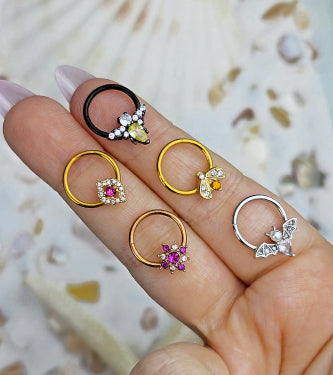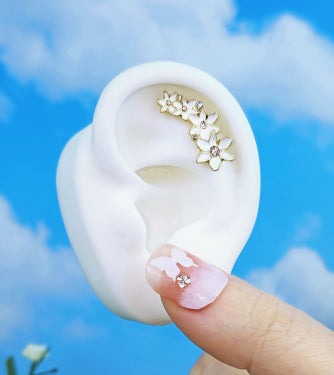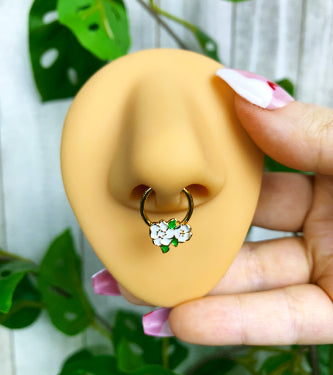With so many different materials out there, it can be difficult to decide exactly what’s best when it comes to body jewelry. Most items made to be worn in a body piercing will come in several styles and types, and for the conscious consumer, it’s always a good idea to be aware of all the facts.
Gold, for example, can sometimes be confusing, as many different types of “gold” jewelry appear on the market. For body jewelry in particular, most of what’s available will be gold tone (not real gold), 18 kt gold (75% gold with metal alloys composing the secondary percentage), 14 kt gold (about 58.5% gold along with other metals), or gold plated (a different type of metal, coated in some type of real gold). 14 kt gold is the most prevalent for this type of jewelry because the trace metals added in with the real gold provide strength that allows for everyday wear. Some manufacturers will use metals like copper in 14 kt gold items, while others prefer to use sterling silver for quality or to insure the item is hypoallergenic.
Sterling silver as a material is also very common for items like nose and belly piercings, because this metal is high shine and durable. Other metals used for piercing jewelry include surgical grade stainless steel, and titanium. Stainless steel items will often be labeled as 316L Stainless Steel, which refers to the composition of the metal. This type of steel is surgical grade and is approved for use in surgical components like hip replacement parts. Titanium is also a surgical grade material, and is often used for both initial piercing, and continued wear. Grade 23 titanium, which is used for quality body jewelry items is hypoallergenic and extremely resistant to weathering and fracture. This type of titanium is even used in aircraft framing! The phrase “anodized titanium” will appear in jewelry specifications as well. Anodized means that there is a titanium coating over other material (usually 316L stainless steel).
The best components by far for those who have allergies are going to be made out of bioplast, however, rather than one of these metals. Bioplast is a non-metallic, movable material that is completely biocompatible. This type of jewelry and barbells are often recommended by piercers, especially for healing piercings or prevention of infections in individuals who may have skin sensitivity or allergies. Bioplast comes in a wide variety of colors and styles, just like metal items, and in some cases can even be sliced down and rethreaded for custom length.
No matter the type of jewelry, any of the materials covered here are bound to be reliable and fashionable, to meet changing lifestyle needs. And when in doubt, your friendly neighborhood piercer is a wonderful resource for even more information about what you can and should be wearing in your favorite piercing.



